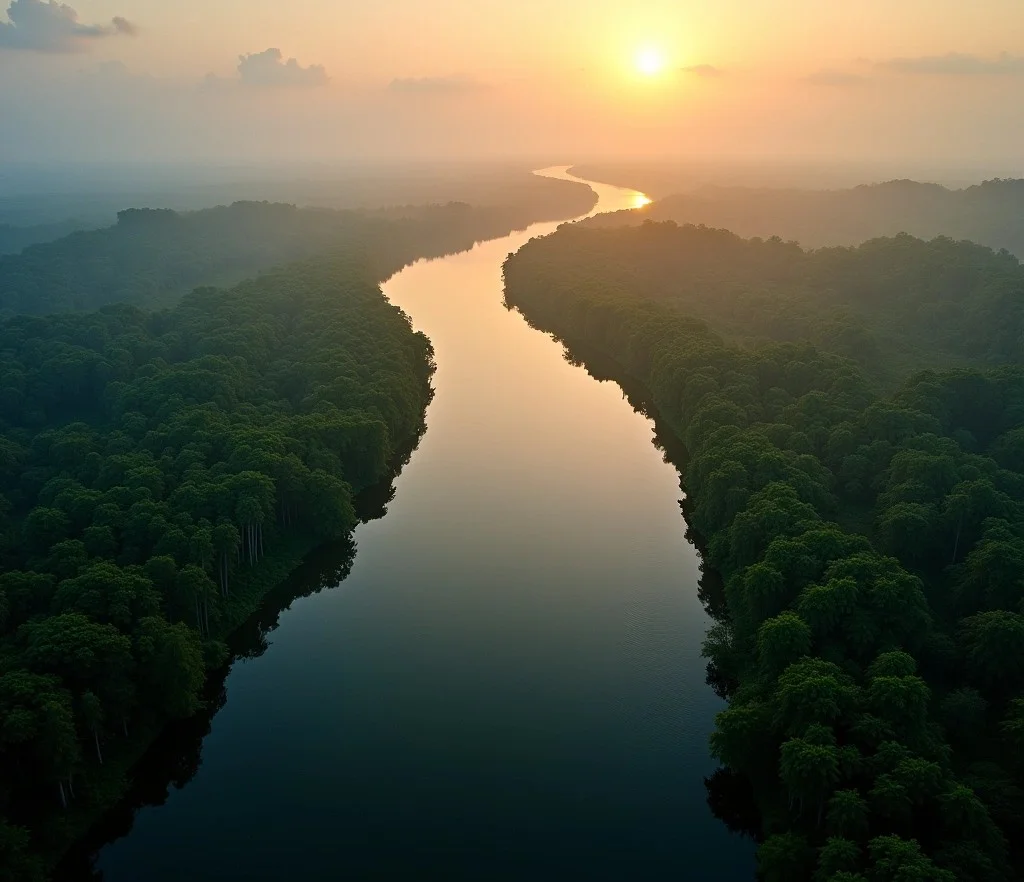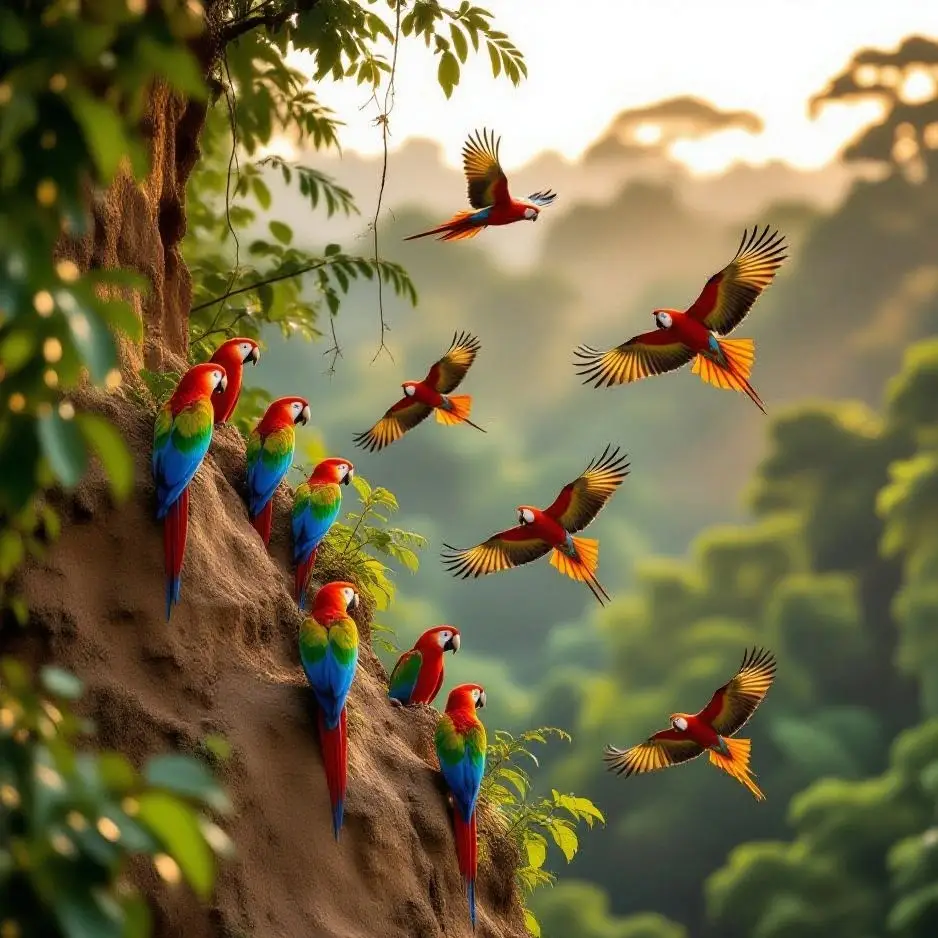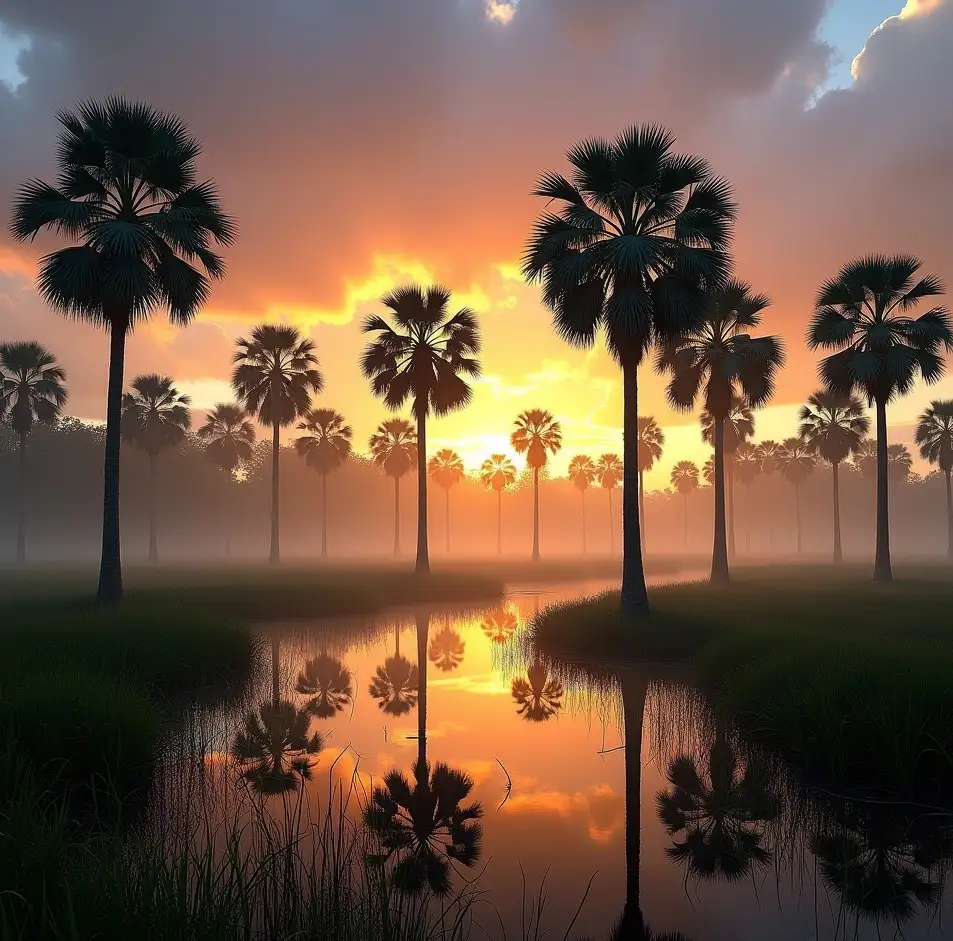Peruvian Amazon 12 Facts You Will Not Find In Guidebooks

The Peruvian Amazon is more than a green blur on the map. It is a living laboratory where Andean ice feeds the world’s largest river system, ancient cultural codes are woven into textiles and body art, and forests turn into mirrors when the waters rise. Below are twelve well researched and lesser known facts that will change how you see Peru’s Amazon. Each point includes clear takeaways for travelers, nature lovers, and conservation minded readers.
Amazon Ecological Expertise
Professional ecological assessment and expertise services for sustainable Amazon rainforest projects.
View projectBusiness in Peruvian Amazon
Comprehensive legal and practical guide for establishing and running businesses in the Amazon region.
Read guide1 The most distant source of the Amazon may be the Mantaro in Peru
For decades, the snowfields of Nevado Mismi above the Apurímac River were held up as the Amazon’s ultimate headwaters. A 2014 remeasurement of headwater lengths argued that the Mantaro River system in Peru could be the most distant source, adding dozens of kilometers to the Amazon’s maximal length. The debate remains open because a section of the Mantaro is seasonally dewatered by a diversion, but the key point is this the longest pathway from raindrop to Atlantic very likely begins in Peru.
Traveler takeaway If you love river lore, you can visit high Andean valleys connected to both the Apurímac and Mantaro systems and appreciate that the Amazon’s story starts on Peruvian mountains.
2 Peru holds an enormous share of Amazonia and most of Peru is rainforest
Peru contains one of the largest portions of the Amazon Basin after Brazil, and the Amazon rainforest covers about 60% of Peru’s territory, shaping the country’s climate, culture, and economy. This scale is often underplayed in travel primers yet explains why biodiversity hotspots appear across multiple Peruvian regions from Madre de Dios to Loreto.
Traveler takeaway Planning across more than one region Madre de Dios for lowland forests, Cusco for Andean gateways, Loreto for flooded forests lets you see different faces of the same giant biome.
3 Pacaya Samiria becomes a mirror world during seasonal floods
The Pacaya Samiria National Reserve in Loreto is nicknamed the Jungle of Mirrors because dark blackwater rivers and lakes reflect the forest canopy with startling clarity when water levels rise. Seasonal water level differences can be huge the gap between low and high water can approach 8 to 12 meters in parts of the Peruvian Amazon, flooding vast forest tracts and concentrating wildlife on higher ground.
Traveler takeaway High water months bring canoe access deep into the forest and perfect reflections for photography, while low water months reveal beaches, trails, and concentrated wildlife. Both seasons are rewarding.
4 A non volcanic boiling river flows in the Peruvian Amazon
Near Pucallpa, the Shanay Timpishka or Boiling River runs hot enough to scald, reaching near boiling temperatures despite being far from any volcano. Scientific work has traced the heat to deep geothermal circulation rather than magmatic activity. The river is sacred to local communities and fragile as a geologic wonder so it must be treated with utmost respect.
Traveler takeaway This phenomenon is on private and indigenous managed lands and is not a casual hot spring stop. Arrange ethical visits that follow local rules.

5 Manu National Park compresses the Andes to Amazon gradient and breaks biodiversity records
Spanning high Andean grasslands, cloud forests, and lowland Amazonian rainforest, Peru’s Manu National Park holds exceptional species richness and ranks among the richest places on Earth for birds, reptiles, amphibians, and insects. Its isolation and extreme elevational range pack entire biomes into one protected area.
Traveler takeaway A single journey in Manu can move you from spectacled bear habitat to giant otter oxbow lakes. The secret is the vertical variety, not just the horizontal extent.
6 Tambopata hosts some of the largest macaw clay licks on Earth
Along the Tambopata River, giant natural clay banks known as colpas attract hundreds of macaws and parrots. Long term research shows that parrots seek sodium and may reduce the effects of plant toxins by eating clay a behavior called geophagy. Tambopata’s clay licks rank among the largest known, and careful viewing protocols now balance tourism with parrot welfare.
Traveler takeaway Arrive at dawn, keep noise down, and use binoculars. Responsible operators space boats and blinds so the birds land calmly.
7 Iquitos is the largest major city on Earth unreachable by road
Peru’s river port of Iquitos has hundreds of thousands of residents yet no highway connecting it to the rest of the national road network. You can only reach it by air or by river. The city’s isolation influences prices, logistics, and conservation Iquitos depends on waterways, not highways, which shapes its culture and its footprint in the forest.
Traveler takeaway Logistics are river and air based. That makes Iquitos an ideal base to explore floodplain reserves such as Pacaya Samiria without cross country driving.
8 White sand forests near Iquitos shelter species found almost nowhere else
Just outside Iquitos lies the Allpahuayo Mishana National Reserve, home to the largest concentration of white sand forests known from Peru. These nutrient poor varillales harbor high endemism including the Iquitos gnatcatcher and a suite of habitat specialists that birders and botanists prize. The reserve also protects blackwater floodplain forests of the Nanay River, adding further habitat diversity in a compact area.
Traveler takeaway Do not expect megafauna here the magic is in specialized plants and discreet birds. Hire local guides who know the songs and microhabitats.
9 Two species of river dolphins patrol Peruvian waters
Peru is home to both the pink Amazon river dolphin Inia geoffrensis and the smaller gray tucuxi Sotalia fluviatilis. The Amazon river dolphin is classified as endangered and both species use floodplain channels and lakes, including within Pacaya Samiria. Responsible encounters keep distance and avoid feeding or chasing.
Traveler takeaway Best chances often occur at confluences and lake outlets at dawn or dusk. Your boat’s speed and angle matter slow, steady approaches keep stress low for these sensitive mammals.
10 Peru’s northern Amazon hides one of the most carbon dense peatland complexes on the planet
In the Pastaza Marañón Foreland Basin west and south of Iquitos scientists mapped vast tropical peatlands storing billions of tons of carbon. A special forest type there the pole forest ranks among the most carbon dense ecosystems measured in Amazonia. Protecting these wetlands is a clear climate priority.
Traveler takeaway You will not see towering trees everywhere in peatlands. Open palm swamps of Mauritia flexuosa and stunted pole forests are the visible clues that you are standing on a carbon vault.

11 The fate of a single palm shapes wildlife diets and women’s livelihoods
The bright red fruit of the aguaje palm Mauritia flexuosa is a staple for people and wildlife, yet for years many harvesters felled female palms to collect the fruit, reducing female trees and altering swamp structure. Research and community initiatives now promote climbing rather than cutting. Switching to climbing increases the proportion of female palms and can raise incomes while protecting peatland health.
Traveler takeaway When you buy aguaje juice in Iquitos or Nauta, ask vendors where fruit came from. Supporting suppliers who harvest by climbing helps forests and families.
12 Uncontacted Indigenous peoples still live in Peru’s Amazon
Peru maintains reserves for Indigenous peoples in isolation and initial contact often called PIACI including the Mashco Piro. Reports confirm their presence and highlight the risks posed by outside incursions. Respect for no contact policies is both a human rights and a health necessity.
Traveler takeaway If you ever encounter a distant group or see signs along remote rivers, back away calmly and notify authorities through your operator. Photographs and gifts can be dangerous and are illegal in protected zones.
Sustainable Eco-Business Amazon
Building sustainable eco-businesses in the Peruvian Amazon rainforest with environmental consciousness.
Learn morePeru Investor Visa Guide 2025
Complete guide for obtaining an investor visa in Peru - requirements, process, and tips for 2025.
Read guideAmazon rivers come in three colors with different chemistry and wildlife
Not all Amazonian waters are the same. Whitewater rivers carry Andean sediments and nutrients, blackwater rivers are acidic and tea colored from dissolved humic compounds, and clearwater rivers are low in nutrients and sediments. In Peru you can stand at whitewater Ucayali banks one day and glide across blackwater lagoons of the Nanay the next, watching how fish, dolphins, and floodplain plants sort themselves by water type.
| River type | Typical color | Chemistry | Peru examples | What you will notice |
|---|---|---|---|---|
| Whitewater | Pale brown | Neutral pH, high suspended sediments, higher conductivity | Marañón, Ucayali, Madre de Dios | Vast sandbars at low water, productive fisheries, rich várzea floodplains |
| Blackwater | Tea dark | Acidic pH, low nutrients, high dissolved organic carbon from leaf litter | Nanay, Pacaya, Samiria | Mirror like reflections, fewer mosquitoes over open water, specialized plants and fish |
| Clearwater | Greenish clear | Low sediments and nutrients | Upper tributaries in shield or foothill geology | High water clarity, rocky riffles in places, distinct fish communities |
Why it matters River type explains why certain wildlife and travel experiences cluster by basin. Clay licks and giant river beaches are typical of whitewater floodplains, while blackwater oxbows are prime for reflections and quiet dolphin encounters.
Where to see these facts in action
| Fact | Best place | Best season | Local tip |
|---|---|---|---|
| Amazon headwaters debate | High Andes near Apurímac or Mantaro drainages | Dry season for road access | Ask local guides about river names and confluences they will point out how tributaries change names along the way |
| Jungle of Mirrors flooding | Pacaya Samiria | High water Oct to Apr for mirror scenes Low water May to Sep for beaches | Plan two different trips or a shoulder season visit to catch both moods |
| Boiling River | Near Pucallpa Mayantuyacu | Year round with permissions | Only visit with authorized hosts and never enter the river |
| Macaw clay licks | Tambopata River | Dry mornings are best | Use a long lens from blinds and keep voices low |
| White sand endemics | Allpahuayo Mishana | All year | Birding at dawn increases your chances for the Iquitos gnatcatcher |
| Peatland carbon vaults | Pastaza Marañón Foreland Basin | Dry for access | Travel with researchers or conservation NGOs specialized in wetlands |
Planning insights for a smarter Peruvian Amazon trip
- Think gradients not points packing Manu plus Tambopata plus a Loreto flooded forest gives you Andean to lowland to wetland variety in one journey.
- Travel with science in mind operators who collaborate with researchers often provide deeper interpretation at clay licks, peatlands, and dolphin habitats.
- Support better harvesting ask for aguaje from climbing harvests and crafts from communities with approved management plans.
FAQ about the Peruvian Amazon
Is the Peruvian Amazon safe to visit
Yes with reputable guides and operators. Choose lodges and cruises authorized to operate in protected areas and follow park rules on wildlife distance and noise. In remote headwaters and near PIACI reserves operators must follow strict no contact policies.
When is the best time to see wildlife
Low water months May to September concentrate animals along shrinking channels and riverbanks making sightings easier. High water months October to April allow deeper canoe access into flooded forest and offer unique behaviors such as dolphins foraging among submerged trees.
Where can I see the famous macaw clay licks
The Tambopata River corridor hosts multiple major clay licks including some of the largest known. Go at dawn with a licensed guide and use blinds to minimize disturbance.
Why do some Amazonian waters look black or brown
Water color reflects chemistry and sediments. Brown whitewater carries Andean silt and nutrients, blackwater is tea colored from dissolved organic carbon with low nutrients and slightly acidic pH. Both support distinct floodplain ecosystems.
Can I visit the Boiling River
Visits are limited and must be arranged with the community and site custodians near Pucallpa. It is a sacred and dangerous place never touch or enter the water and always follow local guidance.
Are river dolphins common in Peru
They are widely distributed but easily disturbed. The pink Amazon river dolphin is endangered and the tucuxi is also threatened. Ethical operators keep distance and avoid feeding or chasing.
What is special about the white sand forests near Iquitos
These rare nutrient poor forests host endemic birds and plants including the Iquitos gnatcatcher and represent the largest concentration of white sand forest known from Peru within a short drive of a major Amazonian city.
Final thoughts on exploring the Peruvian Amazon beyond guidebooks
The Peruvian Amazon rewards travelers who read the water as closely as the trees. Understanding headwaters debates, flood pulses, peatland carbon stores, and the human stories behind Shipibo Konibo art and sustainable aguaje harvesting turns a beautiful trip into an informed one. Choose operators who respect wildlife distances, support community management, and work with scientists. The result is a richer journey and a forest more likely to thrive for the next one.
Amazon River Research
National Geographic's comprehensive study on the Amazon River's length and source.
Read articlePacaya-Samiria National Reserve
Peru's largest protected flooded forest area in the Amazon basin.
Visit reserveAllpahuayto-Mishana Reserve
Protected area preserving unique white-sand forest ecosystems in Peru.
Explore areaIquitos City Guide
Britannica's comprehensive guide to Iquitos, gateway to the Peruvian Amazon.
Learn moreAmazon Microbiology Research
Scientific study on microbial diversity in the Amazon ecosystem.
Read research